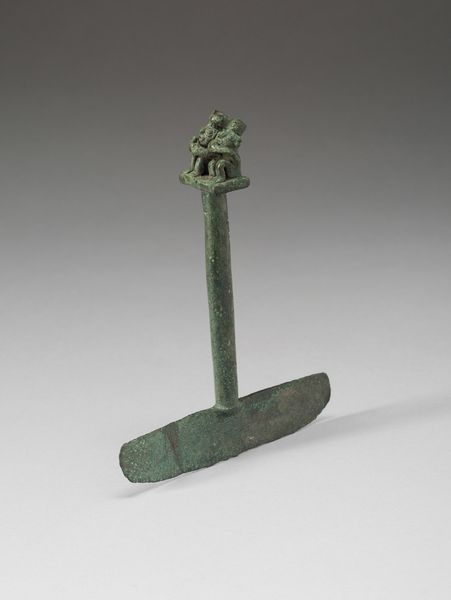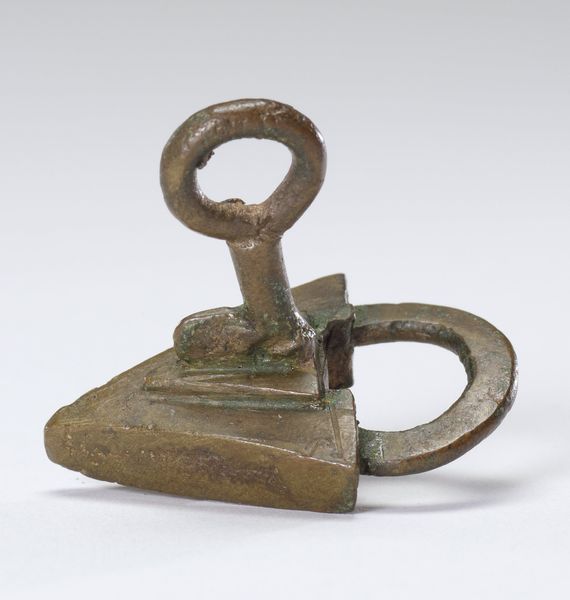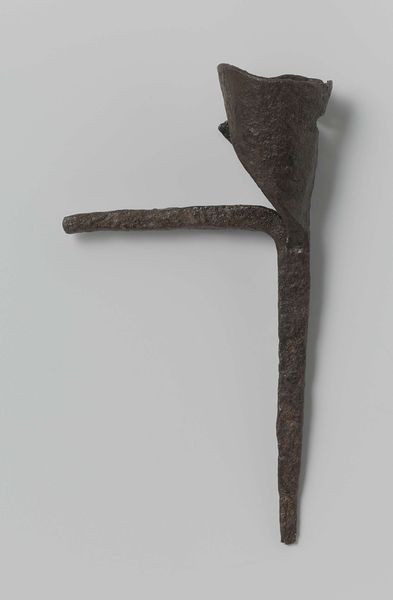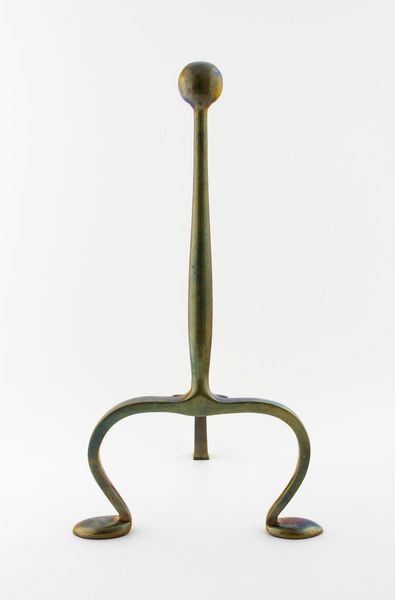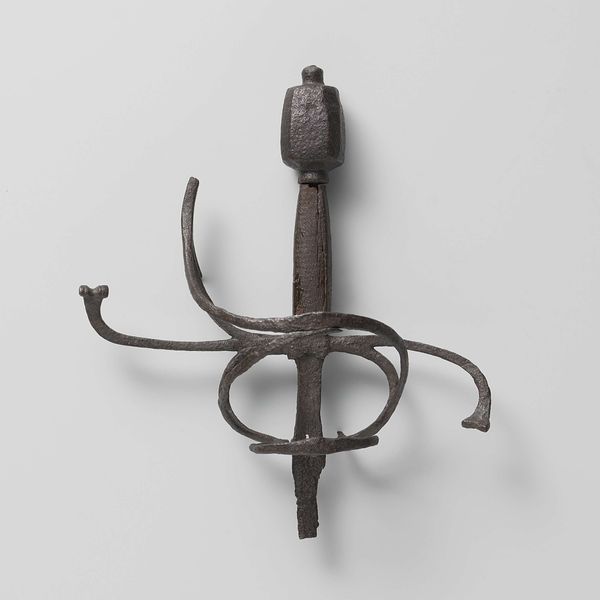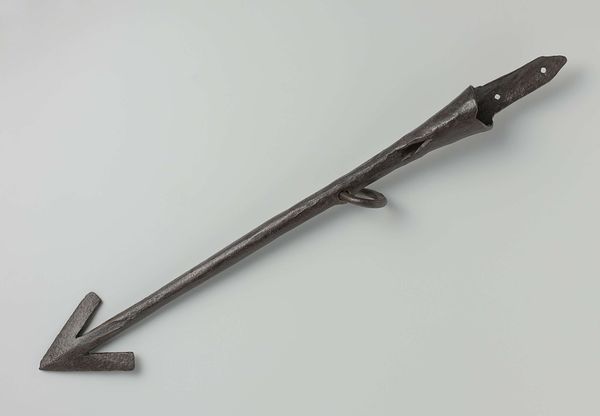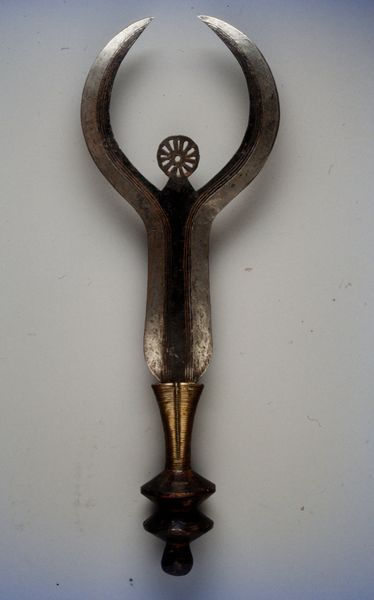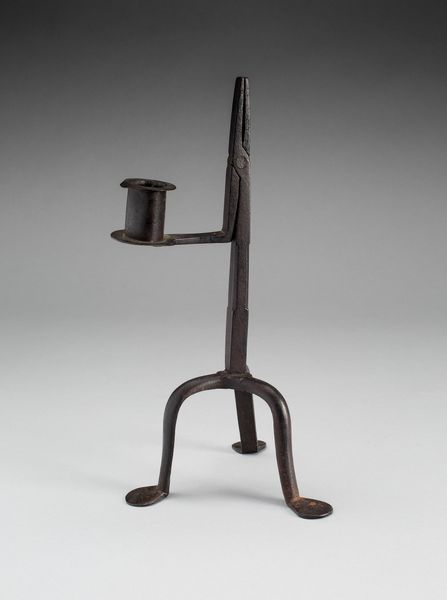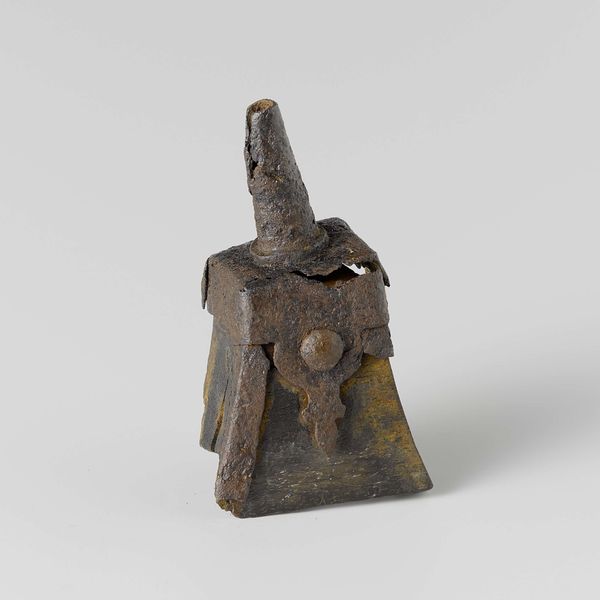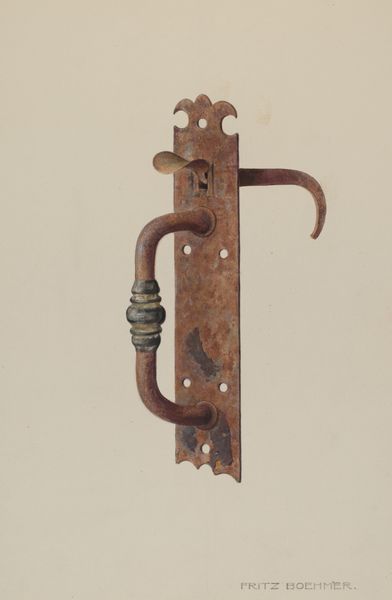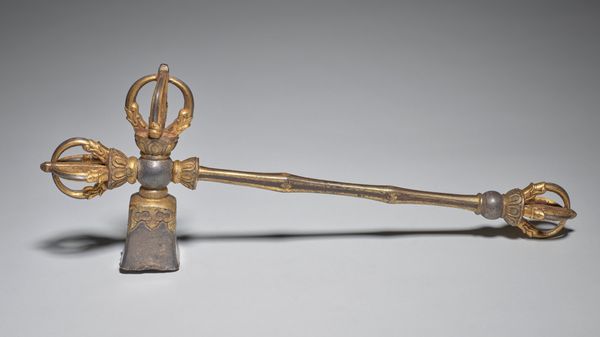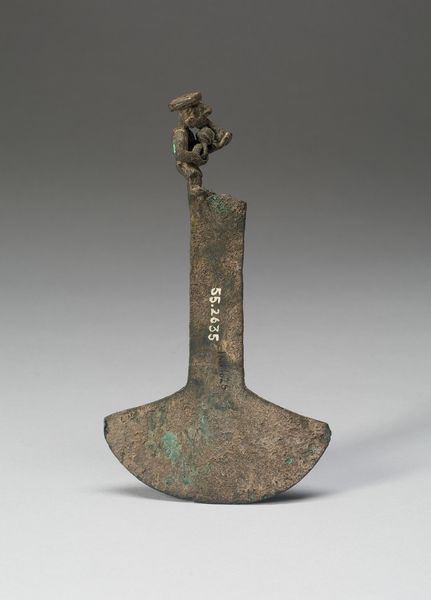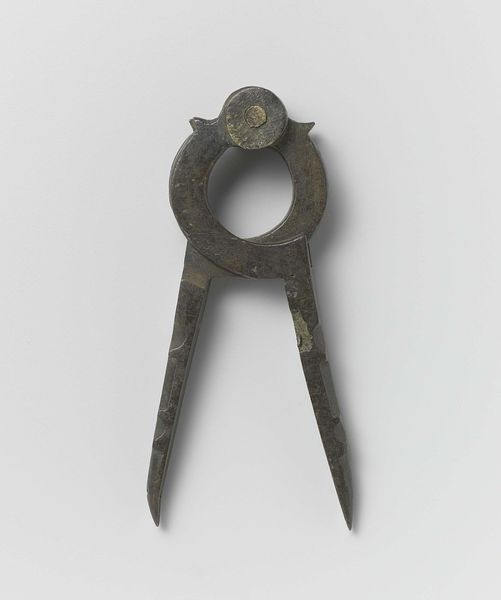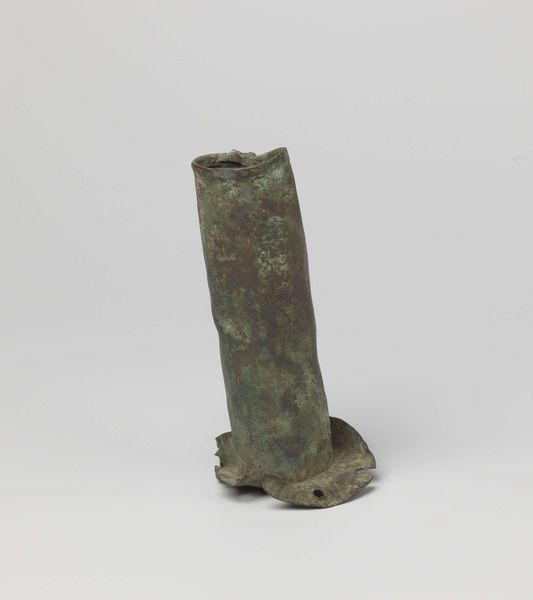
Wide-Blade Knifew with Reclining Animal on Top Possibly 1440 - 1540
0:00
0:00
bronze, sculpture
#
bronze
#
figuration
#
sculpture
#
indigenous-americas
Dimensions: 11.6 × 7.8 cm (4 9/16 × 3 1/16 in.)
Copyright: Public Domain
Curator: Editor: We’re looking at a bronze sculpture called "Wide-Blade Knife with Reclining Animal on Top", potentially from the Inca civilization, dating back to 1440-1540. The miniature animal figure really dominates my first impression. What catches your eye? Curator: Certainly. The knife's formal elements present an interesting paradox. Its stark, almost primitive functionality is contrasted with the highly stylized representation of the animal. Observe how the simple, symmetrical form of the blade anchors the composition, providing a visual base for the slender shaft. The texture and patination, likely accrued over centuries, speak to its age and material transformation, inviting tactile consideration. But, does the crude knife reduce or emphasize the decorative animal? Editor: I see what you mean about the contrast! It makes me consider whether the blade should even be considered functional. Curator: Precisely. The work balances the practical and ornamental, demanding that we contemplate its intended purpose beyond mere utility. The animal atop shifts the piece into the realm of symbolic object, complicating a straightforward reading. Note the deliberate construction: the linear shaft, the sharp angle that morphs into a plane. Editor: That is an excellent insight! How do these relationships, plane, angle, mass contribute? Curator: These formal attributes lead to considering this artwork as more than a simple tool. Through this interplay of design elements, a relatively common place instrument is transformed, isn't it? It now has significant spiritual or societal status. It compels us to consider indigenous notions of craft, technology, and iconography of Inca culture. Editor: This examination of formal components gives me an elevated insight and helps decode indigenous concepts of innovation, material, design, and historical background. Thanks for your explanation. Curator: It’s a testament to how focused analysis of composition, texture, and the relationship of form and figure enhances one’s appreciation for material and cultural antiquity.
Comments
No comments
Be the first to comment and join the conversation on the ultimate creative platform.
